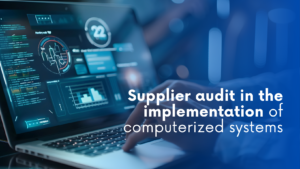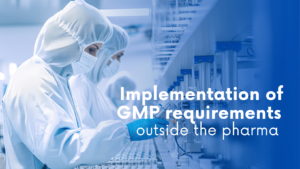Why bother amending SOPs (Standard Operating Procedure) at all when things have been fine so far?
We worked so hard two years ago during the last amendment, and we already have so much other work, so why stir things up now? On the one hand, it’s just three things that need changing, maybe five sentences altogether. On the other hand, it would be great to straighten out some overdue and ripe-for-improvement topics, update the content, formally add the new position created four months ago, accommodate the recent expansion of facilities, etc. Sound familiar? It might seem like a trivial issue, but it can cause quite a stir.
The initiation of work on the amendment can stem from substantive premises, which will be mentioned later in the text. Sometimes, the need for such an amendment is understood by the team of experts directly involved in the process, and only a pretext for the amendment is sought. The article will not describe a specific SOP, nor will it discuss the obvious requirements of Good Documentation Practice described, among others, in Chapter 4 “Documentation” of the GMP Regulation. These requirements are reminded to all pharmaceutical industry employees during periodic GMP basic training. The text also will not describe the formal path of amendment, which usually requires supplementing systemic documents, official correspondence, or documentation management system. So what will this article be about? It will focus on what excites the team most during the amendment process – behind-the-scenes battles over responsibilities, rights, imposition of new processes on others, throwing obstacles, standing one’s ground, and rubbing in efficient, realistic, logical, and somewhat team-friendly solutions. There will also be elements of GMP gossip, which may elicit a few mischievous smiles.

Sometimes, the amendment of an SOP occurs in an atmosphere of mutual understanding, leading to compromise or even consensus. However, it can also become a battleground where arbitration becomes inevitable, and one or both sides of the conflict may emerge as losers. The dead-end of attempting to find content acceptable to everyone at any cost often leads to an increase in the formalism of the process, theoretically accommodating all viewpoints but practically hindering the efficient execution of activities described in the SOP, especially in non-standard situations. And such situations may arise as early as the day the new document edition is implemented.
Initiating changes in procedures may arise from, for example:
- Changes in legislation,
- Changes in corporate standards,
- Results of periodic review,
- Findings from the FMEA (Failure Mode and Effects Analysis) Review/ Management Review,
- Change Control,
- Corrective and Preventive Actions (CAPA),
- Audit and inspection reports,
- Accumulation of minor changes,
- Employee suggestion,
- Other reasons.
Often, a minor change in one document triggers a series of other changes (the butterfly effect). Someone needs to implement these changes, someone needs to identify these connections, someone needs to appoint a team of stakeholders, someone needs to establish the scope and content of the changes, etc. This requires the efforts of many people already engaged in their standard duties, so a Junior Specialist in Quality Assurance might say: “When will you get this done if everyone gathers on time and starts working on it?” Can I put the planned completion date for next week? Such a deadline will look good on the schedule… At first glance, the question seems illogical, but many employees working in GMP have heard it in exactly this wording or at least similar symbolism.
Scope – amendment of SOP
One of the more sensible ideas to kick-start such work is to first determine its scope. I’m not suggesting immediately starting the Change Control process, but some elements of it can be utilized. For example, expert review can be conducted. This could take the form of, for instance, emailing individuals involved in the process for their opinions on the proposed amendment within a specific scope. In the feedback (with a set deadline), information should be provided about the change, its impact on the current system balance, its effect on other documents, and any additional topics requiring amendment in the process. This serves as a good knowledge base necessary for a constructive discussion among experts about the final scope of the amendment. It’s essential to assess at this stage which documents need to be refreshed, to what extent, what changes in responsibilities should be included, and who should provide draft versions of the new documents and by when. It’s worth communicating changes to all stakeholders at this stage to reduce the risk of non-acceptance at the end of the amendment process.
Process – amendment of SOP
Certainly, it’s essential to ensure understanding and acceptance of the need for procedure changes by the authoring team. If this is lacking, the best solution is a decision and directive from the management. After this stage, it’s crucial to determine what major changes will be introduced and who will be responsible for them. Undoubtedly, this stage can be the most emotionally charged during the process. Delaying these difficult conversations can result in revising an almost completed SOP and essentially double the work. It’s safe to assume that individuals assigned new tasks won’t be thrilled with the idea and may try to sabotage the final allocation of responsibilities and duties in various ways. These negotiation-like discussions shaping the main changes should be documented, for example, in official notes or meeting protocols. Initially seeming like unnecessary administrative work, this documentation can serve as excellent evidence confirming at least partial and limited compromises. In my opinion, only then can we begin drafting the new SOPs. They should be reviewed according to internal procedures.

It’s also valuable to share the draft content with all stakeholders. They can then verify the application of previous agreements and propose minor changes. An ideal team to draft the document would consist of a Quality Management specialist who knows GMP requirements, is familiar with the functioning Quality System in the manufacturing plant, understands the principles of developing systemic documents, and is the process owner. Working in such a duo ensures compliance with all requirements while also adding practical and operational features to the procedure. Once everyone is satisfied with the document’s content, my favorite tactic is to simulate the process according to the developed (yet unapproved) draft by the frontline employees directly performing the tasks described in the SOP. It’s best if these are employees who were not previously involved in the amendment and who possess a few important yet irritating traits characteristic of some supervisors. These traits include reluctance toward documentation, aversion to duplicating the same data in different places, questioning accepted rules that they find illogical, and valuing their work comfort. Such individuals often won’t hesitate to say that this approach isn’t wise, won’t work, will block the process, or is simply nonsensical.
Usually, after such a stress test, new feedback can be categorized as highly valuable, requiring changes to the draft, and those that, with a broader perspective, the developers will explain the validity of the new approaches to the testers. However, this part of the work often doesn’t come to fruition due to time pressure – which is a shame. However, the new document will face these testers immediately after implementation, and making corrections will be more time-consuming or postponed to the future. Skipping such an internal process simulation is only an apparent time saver and can quickly backfire. Instead of wondering how much these tests will prolong the amendment process, it’s worth considering something else: how much time and effort will we waste by skipping this stage before the amendment? This is a classic mistake of omission.
Formal acceptance and approval – amendment of SOP
Another critical attempt for the procedure content is the formal acceptance and approval of the content by senior management – depending on the document’s significance and internal company policies, this could involve different personnel. Often, in more revolutionary documents, it’s the members of the board who are responsible. This is another critical point because often it’s only now that these individuals read the entire content comprehensively. They may only now realize the impact of the amendment on the functioning of the pharmaceutical plant in the longer term.
At this stage, they may also start receiving feedback, warnings, from individuals not directly involved in the amendment (so-called well-wishers), while others, after reading the final draft, might express concerns about the impact of the changes on process operations. Here, further obstacles may arise, but assuming that everyone is working toward the same goal, understanding and acceptance can certainly be achieved. Sometimes, it may be enforced by a directive from a superior… After all, GMP isn’t a democracy, and someone has to manage it all…
After formal approval comes the stage of training on the new edition of the SOP. Despite the document being reviewed, checked, verified, and approved, it occasionally happens that an obvious mistake is caught during training. Whether it’s due to the trainer – for example, the author of the amendment – or prompted by a question from the trainee. Although making corrections at this stage can be annoying, working with a procedure containing errors is decidedly more problematic. In such cases, it’s advisable to make another amendment, obtain approval from the team responsible for signing the document, and implement the corrected version. It’s best to do this before the previous version becomes effective. To avoid painting a negative scenario, I won’t mention that during the implementation of the new SOP, so-called teething problems may also arise. This applies to systemic documents as well.

Conclusion – amendment of SOP
Whether we like it or not, systemic procedures in a pharmaceutical manufacturing plant must be amended as part of their continuous improvement. Sometimes these are forced changes, such as new legal regulations or the content of the CAPA (Corrective and Preventive Action) schedule, sometimes they arise from organizational needs, and sometimes they involve refreshing and updating. Teams tasked with amending procedures may encounter various attitudes from other members of the company. These range from complete denial to someone who undermines with arguments that even though the changes don’t solve 100% of the problems (but it’s better to fix 85% of the problems than leave the current 100%), individuals deliberately sabotaging to maintain the status quo, those simply uninterested in change, to those welcoming and even enthusiastic about it.
Differences in interests and character traits should not affect the timely, efficient, and justified amendment of SOPs. Some changes should be implemented as quickly as possible after the need is defined. Others, which are less urgent, can be postponed and considered during the next amendment. It’s important not to forget that the entire CAPA process does not serve the comfort of working in the plant but rather ensures patient safety and maintains the highest and acceptable quality of medicinal products until the end of their shelf life. The paths to achieving this goal may vary slightly, but the priority must be maintained and kept in mind during all procedure amendments.
Grzegorz Suwała
Senior Validation Specialist








